Do owls eat snakes?
Snakes have long been perceived as enigmatic and potentially dangerous creatures, and this mystique often sparks a keen interest in understanding their place in the natural world. It’s no wonder that people are curious about the diets of various predators, especially when it comes to the question: “Do owls eat snakes?” well, the answer is yes. The notion of these silent, feathered hunters preying on such serpentine predators adds an intriguing layer to our understanding of both owls and snakes. To unravel this mystery, we delve into the world of owls and their dietary habits, shedding light on their relationship with these often-feared reptiles.
Great Horned Owls, for instance, are known to be versatile hunters with a wide range of prey options. Their menu includes snakes, making them one of the owl species that exclusively hunt these reptiles. Snakes, although not the sole focus of their diet, are available prey within the Great Horned Owl’s hunting range.
Do Owls Eat Rabbits?
It’s important to consider the territorial aspect when discussing whether owls eat snakes. Owls can be found all around the world, and the availability of snakes in their diet varies based on their geographic range. For owls residing in regions where snakes are prevalent, catching these reptiles becomes a natural part of their hunting routine.
The relationship between owls and snakes is a testament to the intricate balance of nature. As opportunistic hunters, owls ensure the snake population remains in check, preventing overpopulation that could upset the ecological equilibrium. This intricate dance in the darkness of the night highlights the role of owls in the ecosystem as apex predators, contributing to the overall health of their environment.
What Types of Owls Eat Snakes?
Several types of owls are known to eat snakes, as snakes can be a part of their diet. These owls are adapted to hunting a variety of prey, including reptiles like snakes. Some of the owl species that commonly consume snakes include:
Barn owls
Barn owls, recognized as widespread and adaptable birds, exhibit an opportunistic approach to their diet, with a primary preference for smaller animals like rodents (such as mice and rats), lizards, some smaller birds, and frogs.
While their regular diet primarily revolves around these smaller creatures, barn owls occasionally consume snakes, depending on circumstances such as hunger and the availability of the snake. Despite not consuming snakes as a regular part of their diet, barn owls, due to their extensive distribution across the globe, are occasionally observed hunting small snakes.
Their extraordinary hunting abilities, especially when it comes to attacking snakes, are notable. Barn owls employ a unique hunting strategy that involves diving from above to capture their snake prey. Leveraging their exceptional hearing, these birds of prey precisely locate the movements of the snake, allowing them to position themselves accurately.
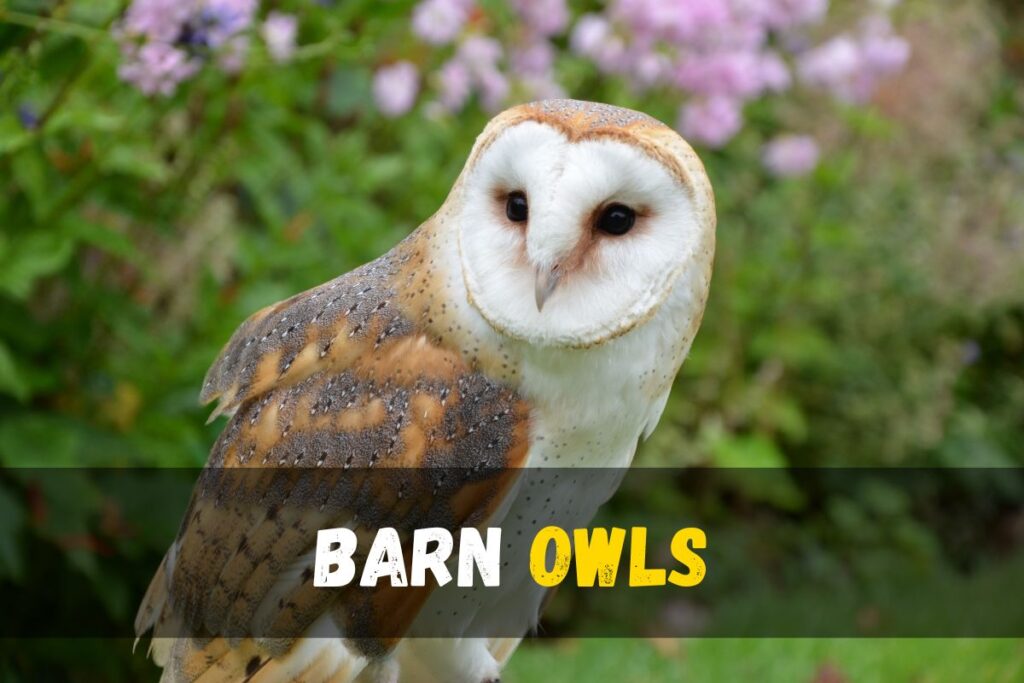
As they swoop down towards their prey, they extend their talons with remarkable precision, seizing the snake and using their strong grip to carry it away safely and effectively. This hunting tactic ensures that the barn owl can secure the snake without being bitten, making this method both efficient and safe in their occasional consumption of snakes.
Burrowing owl
The Burrowing owl, found in North and South America, employs a distinctive technique to handle snakes. Using its powerful talons, it grabs the snakes by the tail and then repeatedly swings them against the ground until they are incapacitated. This hunting strategy, known as “mantling,” is an effective means for the owl to immobilize its prey without risking injury from the snake’s venomous fangs. Additionally, these small birds demonstrate their versatility as hunters by occasionally swallowing small snakes whole.
Do Owls Eat Chickens?
Despite being a small bird, the burrowing owl is exceptional in its approach. It spends time on the ground, not only swooping down on snakes but also locating and attacking them while on the ground. These owls typically target smaller snakes, showcasing their adaptability and selective hunting behavior.
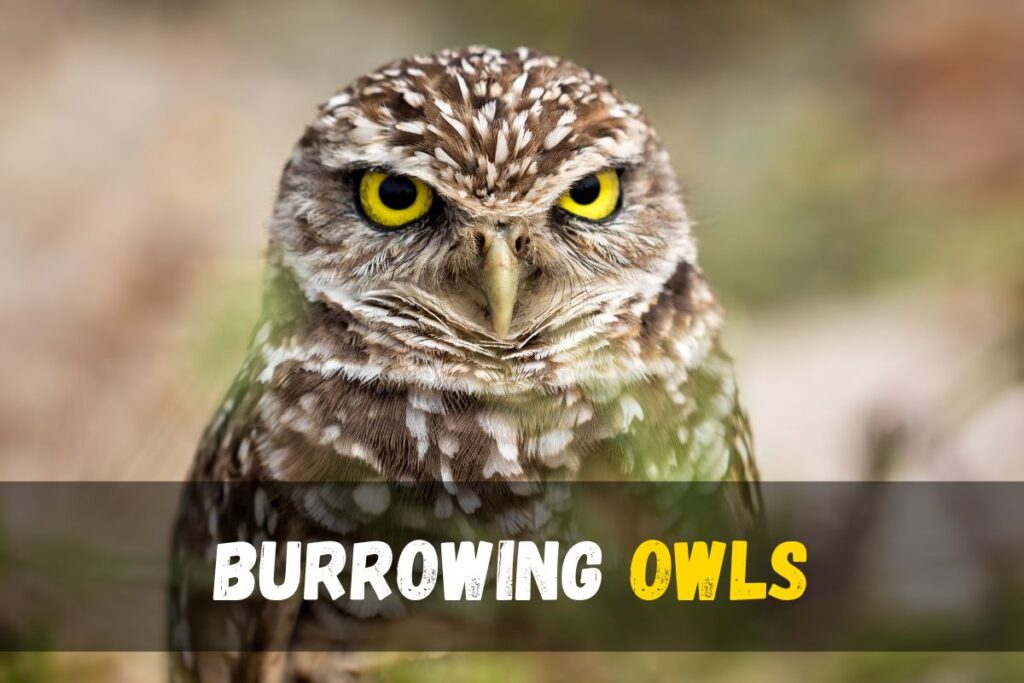
Barred owl
Barred owls, as opportunistic hunters, include snakes such as rat snakes and common garter snakes in their diet. These medium-sized owls possess the capability to swoop down and catch snakes using their claws.
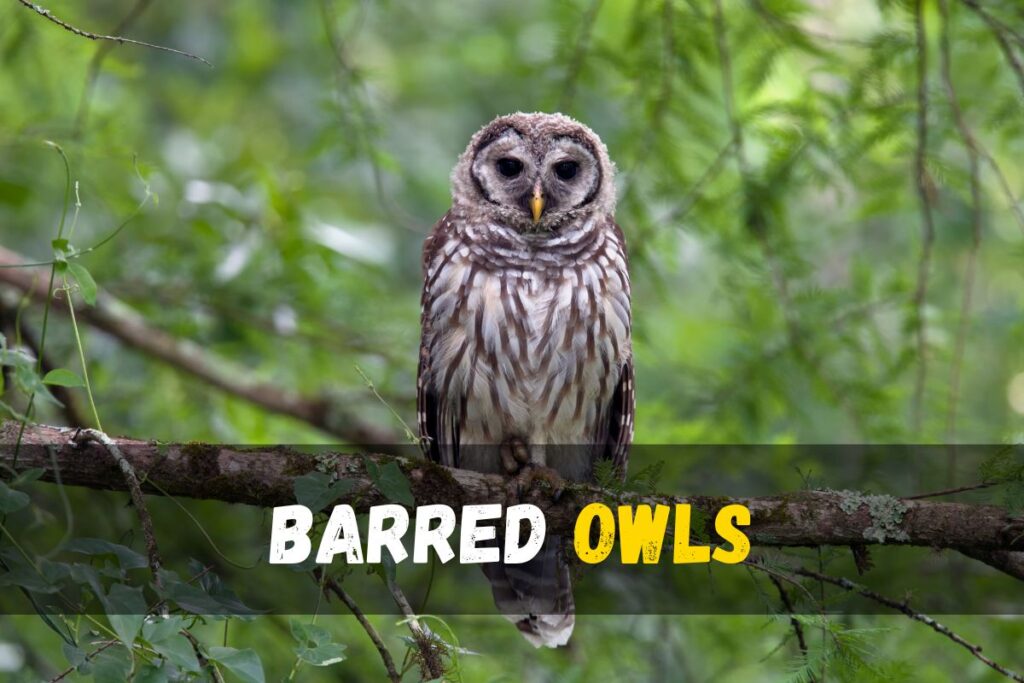
They are known for consuming a variety of animals, including various birds, rodents, lizards, and even fish, demonstrating their diverse dietary habits. Despite being predominantly nocturnal, Barred owls exhibit opportunistic behaviors and might hunt during the day, especially on cloudy days or during nesting seasons. Hence, the diet of Barred owls encompasses a wide range of prey, with snakes being one of the types of animals they actively hunt and consume.
Great horned owl
The Great Horned Owl, known for its impressive hunting skills, is a formidable predator when it comes to snakes. This owl species is adept at capturing and consuming snakes due to its unique hunting strategy. When hunting, the Great Horned Owl swoops down from above, using its sharp talons to clutch the snake tightly, preventing it from escaping. With its powerful beak, the owl strikes the snake’s head, effectively severing its spinal cord and instantly killing it. This strategy ensures that the Great Horned Owl can safely capture and consume its snake prey without the risk of getting bitten.
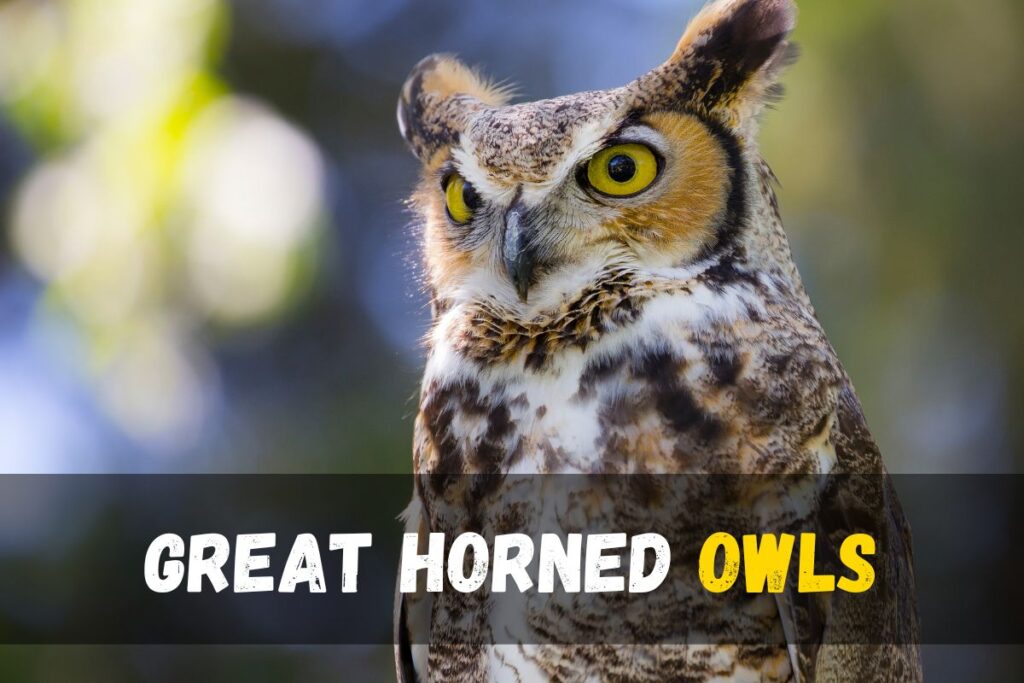
Moreover, the Great Horned Owl’s capabilities extend beyond smaller snakes, as it is easily capable of catching and consuming larger prey, such as gopher snakes, which can grow up to 7 feet in length. The owl’s talons exert a strong force, ensuring that the snake cannot break free once captured. However, it’s worth noting that if the owl doesn’t catch and kill the snake quickly, the snake may attempt to fight back. This demonstrates the Great Horned Owl’s prowess as a snake-eating owl, capable of preying on various types of snakes, including larger and more formidable ones.
Pel’s fishing owl
Pel’s fishing owl is known to eat snakes, particularly water snakes. When it spots a water snake, the owl may swoop down and grab it, using its powerful talons to grab the snake by the head and suffocate it. This strategy allows the owl to avoid the potentially dangerous fangs of the snake, ensuring a successful hunt.
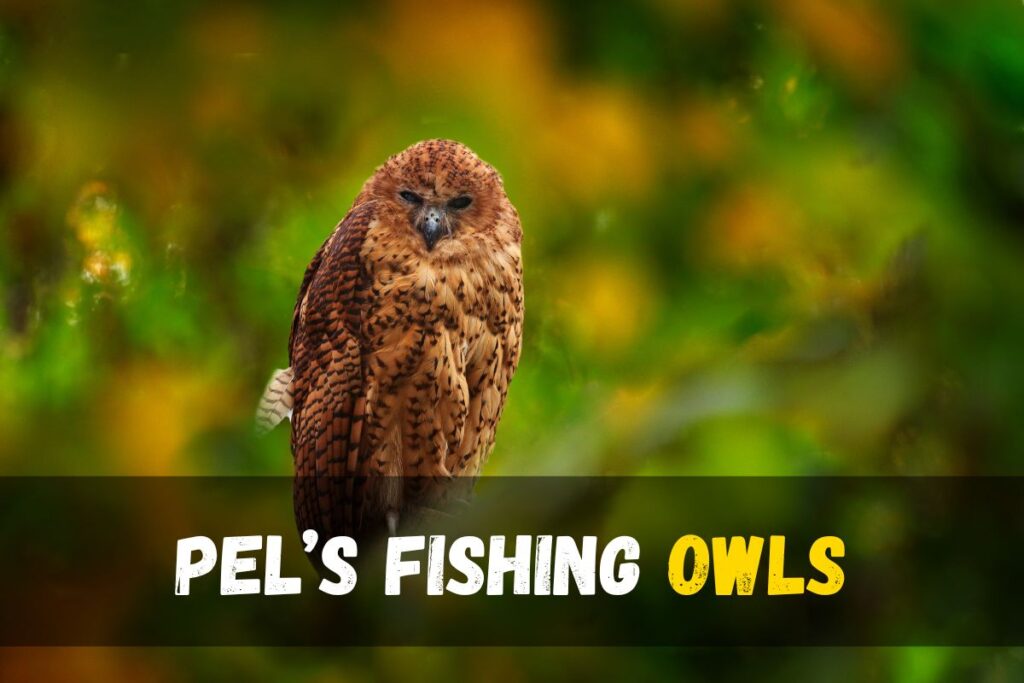
What types of snakes do owls eat?
Owls are known to eat a variety of snake species, but their diet can vary depending on the owl’s size, habitat, and location. Some common types of snakes that owls may consume include:
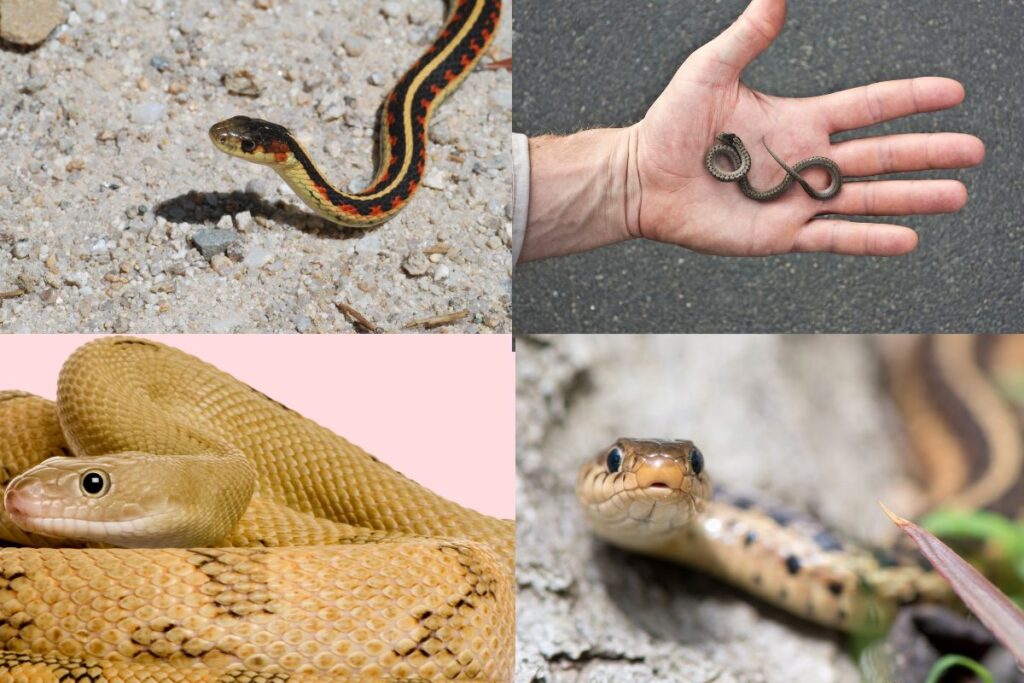
- Garter Snakes: Garter snakes are among the most widespread snake species. They are relatively small, non-venomous snakes found in various regions. Smaller owl species often prey on garter snakes due to their manageable size and abundance.
- Rat Snakes: Rat snakes are large, non-venomous constrictor snakes that are often found in wooded areas. Owls, particularly larger species like the Great Horned Owl, are known to hunt and consume rat snakes as part of their diet.
- Ribbon Snakes: Ribbon snakes are slender, agile snakes known for their speed and agility. They make suitable prey for owls, especially smaller owl species, as they can be caught with their quick movements.
- Small Vipers: While some vipers and pit vipers are venomous, some owls can prey on smaller, venomous snakes due to their specialized hunting techniques and resistance to snake venom.
- Green Snakes: Green snakes are usually slender and have green coloration, which allows them to blend into vegetation. Owls may include these snakes in their diet, especially if they are common in the owl’s habitat.
- Water Snakes: Owls residing near wetland habitats may feed on water snakes. Water snakes are adapted to aquatic environments and can be part of the owl’s diet, particularly those owls that hunt near bodies of water.
- Worm Snakes: Worm snakes are small, burrowing snakes that owls occasionally consume. These snakes are found underground, and owls with the ability to locate and capture them will include them in their diet.
- Corn Snakes: Corn snakes are non-venomous and commonly found in the southeastern United States. In areas where they are present, owls may hunt and eat corn snakes as they are easily accessible and appropriately sized prey for some owl species.

Do Owls Attack Humans?
| Owl Species | Snakes Eaten |
| Scops Owls | Garter snakes, small rat snakes, and snake hatchlings |
| Screech Owls | Small garter snakes, small rat snakes, and occasionally snake hatchlings |
| Barn Owls | Generally do not eat snakes |
| Eagle Owls | Larger snake species, if available |
| Great Horned Owls | Various snake species, if in the diet |
| Burrowing Owls | Small garter snakes and snake hatchlings |
| Snowy Owls | Rarely consume snakes |
| Spotted Owls | Snakes are not a primary part of their diet |
| Tawny Owls | May eat small garter snakes occasionally |
How do owls hunt and catch snakes?
Owls have a unique set of sensory and physical adaptations that make them highly effective at hunting and catching snakes. Their remarkable binocular vision, which allows both of their eyes to face forward like humans, sets them apart from most other birds that have eyes on the sides of their heads. This binocular vision provides them with exceptional depth perception, crucial for accurately judging distances when striking their prey, especially when dealing with potentially deadly snakes.
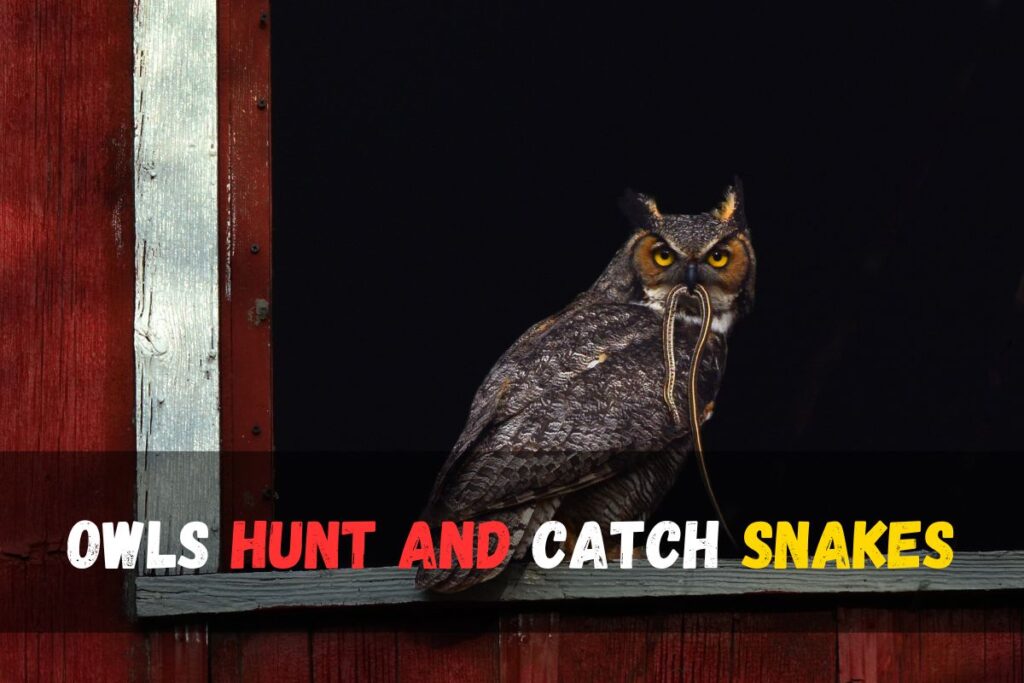
Are Owls Dangerous?
Owls’ keen eyesight, combined with their ability to strike silently, enables them to hunt snakes with great precision. When they spot a snake, they silently swoop down from their perches, using their powerful talons to grab the snake. Once in their grasp, the snake becomes helpless as it cannot strike back without a supporting surface below. Owls can then carry the snake to a branch to consume it.
In the process of hunting and catching snakes, owls employ several tactics. They use their beaks to kill the snake, and in some species like the great horned owl, they crush the snake’s head with their powerful talons, ensuring a quick and effective kill. Owls are also known to use their wings to disorient and confuse the snake, making it easier to capture. Additionally, owls have exceptional night vision and hearing, which allows them to locate and hunt snakes even in low-light conditions.
Their ability to hear the slightest rustling of a snake through the woods, combined with their keen eyesight, helps them pinpoint the snake’s location. When they spot their prey, they silently and efficiently maneuver through the darkness, using their sharp claws to capture the snake mid-swoop. Owls’ adaptations and hunting strategies make them formidable snake hunters, ensuring their next meal without any chance of escape for their serpent prey.
Do they Eat Venomous Snakes?
Owls, as a general rule, can eat venomous snakes, but it’s not a common practice among them. They possess a robust digestive system that enables them to break down and process various components of their prey, including bones, fur, feathers, and even toxins. However, their approach to venomous snakes depends on the circumstances.

Owls typically avoid venomous snakes if other prey options are available. When they do decide to prey on a venomous snake, they employ their sharp talons to immobilize the snake behind the head, preventing it from biting back. Some owls may also use their powerful beaks to quickly and efficiently sever the snake’s head, reducing potential danger.
Are Owls the Smartest?
It’s essential to note that not all owl species are immune to snake venom. Some owl species may be more susceptible to the effects of venom than others. Therefore, the consumption of venomous snakes by owls varies depending on the species and their ability to tolerate snake venom.
Do Snakes Eat Owls?
Yes, some snake species are known to prey on owls. Snakes, particularly larger constrictor snakes like pythons and some species of vipers, can pose a threat to owls. Snakes are opportunistic predators, and if they come across an owl or its nest, they may attempt to consume it.
However, it’s important to note that the likelihood of a snake eating an owl depends on various factors, including the size and species of both the snake and the owl, as well as the specific circumstances. While snake predation on owls can occur, it is not a common occurrence in the natural world, and owls have their own set of defensive strategies to protect themselves from potential threats, including snakes.
How Often Do Snakes Eat?
Snakes do not need to be eaten regularly. Instead, their eating frequency varies based on their age, size, and activity level. When they are young, snakes may eat once or twice a week. However, as snakes get older, they tend to eat less often, with older snakes sometimes consuming a meal once a week or once every two weeks. The feeding frequency of a female snake can increase during the breeding period, with the possibility of eating multiple times a week. Snakes are opportunistic hunters, capable of consuming a variety of prey, including owls, chickens, fish, rats, birds, bats, worms, and termites. In their natural habitats, they can eat almost any animal.
Many people choose to feed their pet snakes with mice and rats obtained from pet shops. To diversify their diet, it’s possible to incorporate earthworms, vegetables, and fruit. Some snakes can even benefit from raw human meat like beef, pork, and poultry due to the essential nutrients, macronutrients, and vitamins it contains. The key to determining how often a snake should eat is by considering factors such as the snake’s activity level, size, and age. Small and young snakes may require feeding twice a week, while larger and older snakes typically need only one meal per week.
What occurs if an owl fails to prey upon the snake?
If an owl doesn’t successfully kill a snake during its hunting attempt, several scenarios may unfold:
- Escape of the Snake: The snake may escape from the owl’s grasp or be too quick to catch. Snakes are often agile and can quickly retreat to a safe location, such as a burrow or dense vegetation, making it challenging for the owl to catch them.
- Attack back: Owls hunting snakes face a potential threat as snakes can defend themselves by striking with venom or constricting. Despite the owl’s swift attacks from above, a larger snake might engage in a ground struggle, potentially biting or constricting the owl. In instances where an owl brings a live snake to its nest but doesn’t kill it, the snake may pose a danger by attacking the owl’s eggs or chicks, leading to their demise. However, in some cases, owls intentionally bring live snakes to their nests because certain snakes can assist in protecting the nest.
- Incomplete Predation: Sometimes, an owl may injure but not kill the snake during the initial attack. In such cases, the snake may be wounded and attempt to escape or defend itself.
- Repeated Attempts: Owls are persistent hunters, and they may make multiple attempts to catch a snake. They could pursue the snake for some time until they either succeed in catching it or give up and search for alternative prey.
- Competition: If other predators or scavengers are present in the area, they may take advantage of the situation and steal the snake from the owl. Animals like raccoons or other birds of prey could potentially snatch the snake away.
- Hunger and Energy Expenditure: If the owl fails to catch the snake or loses it, it may expend energy without a successful meal. This can make the owl hungrier and prompt it to continue hunting for other prey.
- Adaptation and Learning: Owls are intelligent birds and can adapt and learn from their hunting experiences. They may refine their hunting techniques or develop strategies to improve their success rate in catching snakes in the future.
The significance of snakes in the diet of owls.
Snakes can play a significant role in an owl’s diet, serving as a valuable food source for various owl species
- Protein: Snakes are a good source of protein, which is essential for the growth, maintenance, and repair of an owl’s body tissues. Protein is especially important for developing young owls.
- Energy: Snakes provide a source of energy in the form of calories. Owls need energy to fuel their daily activities, such as hunting, flying, and thermoregulation.
- Vitamins and Minerals: Snakes can contain essential vitamins and minerals, such as calcium and phosphorus, which are important for bone health and overall metabolic functions in owls.
- Water: While not a direct nutritional benefit, the body of a snake contains some moisture, which can help owls stay hydrated, especially in arid environments.
- Dietary Variation: Including snakes in their diet allows owls to diversify their food sources, which can be important for overall health. Eating a variety of prey species can help owls obtain a wider range of nutrients.
It’s important to note that owls have specific dietary needs, and their nutritional requirements can vary depending on their species and life stage. While snakes can offer some nutritional benefits, owls also need a balanced diet that includes a variety of prey to ensure they receive all the essential nutrients they require for their well-being.
FAQ’S
Do Baby Owls Eat Snakes?
Yes, baby owls, also known as owlets, may eat snakes, depending on the owl species and the availability of snakes in their environment. Owls are carnivorous birds, and their diet largely consists of small mammals, birds, insects, and reptiles, including snakes.
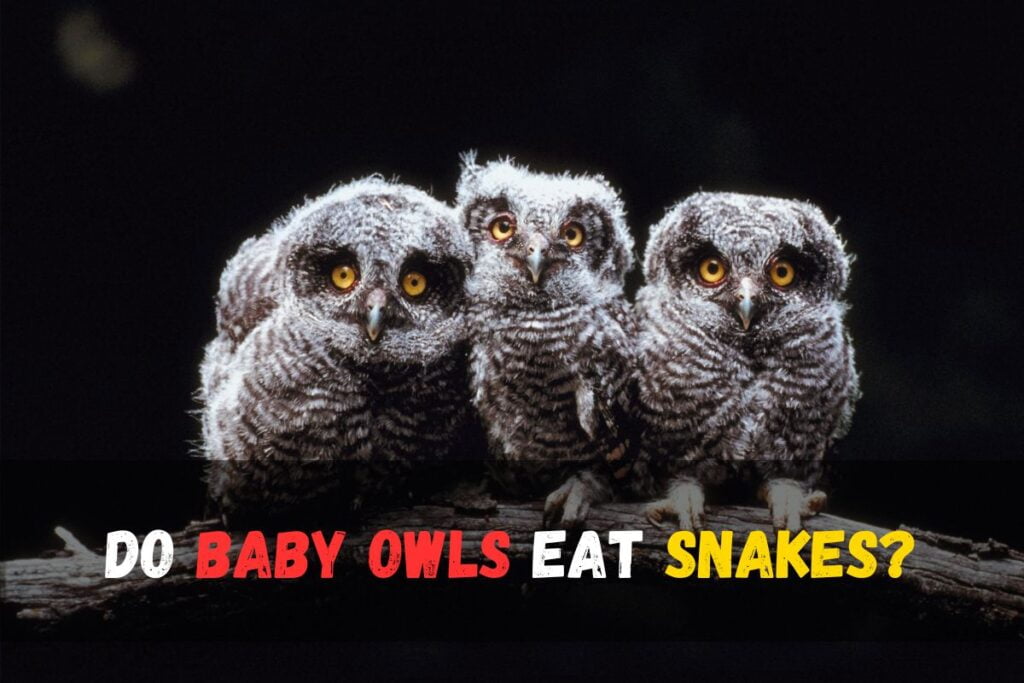
The specific prey items consumed by owlets can vary based on the owl species and the food sources present in their habitat. The dietary preferences of owlets may also change as they grow and develop. Initially, they rely on their parents to provide them with a diet of freshly caught prey, which can include small snakes, if available.
What is the Largest Snake an Owl Will Eat?
The largest snake an owl will eat depends on the owl’s size and species. Generally, owls are known to prey on a variety of animals, including snakes. For smaller owl species like barn owls, their snake prey is usually limited to relatively small snakes. Larger owls, such as great horned owls and eagle owls, can consume larger snakes, potentially reaching several feet in length. The Eurasian eagle owl, one of the largest owl species, is capable of hunting and eating relatively large prey, including sizable snakes. However, it’s essential to understand that owls primarily hunt prey that aligns with their size, hunting abilities, and dietary requirements, and snake consumption may not be a regular occurrence in their diet.
What animal do owls eat the most?
Owls have diverse diets depending on their species. However, looking at the data provided, it appears that mice, shrews, and voles are the animals most commonly eaten by owls. Barn Owls, for instance, primarily feed on these small mammals. Hence, among the various creatures owls consume, these rodents stand out as the animals most frequently consumed by different owl species.



Bundle of information
Very good